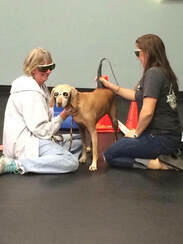 What is Laser Therapy? Laser Therapy goes by many names. Cold laser, LLLT, low-level laser therapy, red light therapy and photobiomodulation are just a few, but the basic idea is that light is used to cause bio-stimulation. Laser stands for Light Amplification by Stimulated Emission of Radiation. It is painless, non-invasive and can be a very quick treatment (depending on the laser). It is used to heal injury, minimize sore muscles, and stimulate muscles for exercise. Not all lasers are created equal. It is important to understand there are different classes of lasers based on safety and power. There are also different settings that are changed for best treatment. When creating a laser treatment plan there are many things to consider:
Who should perform Laser Therapy? In most states any one can buy a laser. There is no requirement to have a medical background or be trained in laser use. The patient is going to have the most benefit from someone who has more specific training in laser therapy. This often means finding someone who specializes in rehab/sports medicine (DACSMR), certified in rehab (CCRP, CCRT, CCRVN), or certified in non-traditional therapies like acupuncture and chiropractics. These individuals more likely understand the physics and physiology behind developing a laser treatment plan. Laser isn't a panacea even though it can be promoted that way. It's important to remember that laser is not inherently safe. There are times when a laser shouldn't be used. Laser can cause severe eye damage. It can also burn the skin and hair when used inappropriately. Would your dog benefit from Laser Therapy? Yes! I use laser therapy to treat most injuries and post surgical healing. Laser can also be used post competition to help with recovery. We have had great success with both our in-house laser and our prescription lasers for at home use. If you feel like laser did not help your dog, don't give up hope! It may be you just need different settings or a different type of laser to help your dog. For more information, please contact us [email protected]
0 Comments
 Join us in welcoming Jade to The Total Canine Hall of Fame. Jade, a 7 year old German Shorthaired Pointer, has been a patient of The Total Canine for a chronic injury to both shoulders. She was originally diagnosed with supraspinatus/biceps tendinopathies. After the initial injury was resolved, Jade continued to visit Dr. Leslie for rehabilitation and therapeutic exercises to prevent re-injury and keep her in great shape for her number one passion, hunting. Jade is a loyal gundog/hunting partner for her owner Greg. She most recently visited The Total Canine for a check-up and exercise plan to ensure that Jade’s fitness was maintained during the off season. This ensured she was ready for the start of the new hunting season in October. Following an in-person consult, Dr Leslie identified some muscle atrophy in the right shoulder region which correlated with reports from Jade’s owner of some limping on the right-side following periods of rest. In discussion with Jade’s owner, a plan was developed that would target the muscle atrophy and resolve the limping, but also aimed to protect the joints for the future to allow Jade to participate in hunting for as long as possible. "By the time Jade saw Dr. Eide, she had been seen by six clinics; after a prolonged series of treatments, Jade was cleared to return to the field only to come up lame again after 30 minutes of hunting on flat ground." - Greg, Jade’s Owner The treatment plan focussed on a comprehensive targeted exercise plan for Jade, both at home exercises and adaptations to Jade’s normal walking/hiking routine to target the right shoulder and to improve overall fitness. The plan also included some advice and recommendation for supplements, interventions targeting the joints and local and systemic pain relief options. Greg and Jade continue to check-in regularly with Dr. Leslie to make sure she is healthy and to update her long-term plan. She’s fit and ready to participate in the 2022/23 season! "Under Dr. Eide’s care Jade has hunted the entirety of every upland bird season since 2017 in some of the nastiest terrain Oregon and Washington have to offer searching for an upland bird species that thrive in these remote hills and she is ready to do it again in a few weeks during the 2022-23 upland season. Based on this experience, I am firmly of the opinion that if your dog needs rehab veterinary services, Dr. Eide is the best provider you will find in Washington State." - Greg, Jade’s Owner The Total Canine has a new location in Marysville Washington.
Dr Leslie is seeing patients Monday through Thursday with treatments available on some Fridays and Saturdays as well. The new location offers the same great services: telemedicine, consults, sports physicals, laser therapy, therapeutic exercise, acupuncture, and more. Massage and Shockwave therapy are coming soon! Email [email protected] to book your appointment. WElcome to the Total Canine Hall of Fame! The Total Canine’s Hall of Fame kicks off with Lola, an almost 6-year-old Border Collie who was knocking bars and misjudging jumps during agility, which tended to get worse as runs progressed. Lola’s owner had tried lowering bars and undertaking a fitness regime but was not seeing any consistent improvement. “After a particularly bad couple of agility runs with my BC Lola I decided that I needed to go all in or stop. After much soul searching I decided that I would go all in & see if we could have some success at the sport we both love. One of the things that we did was contact Dr. Leslie to address Lola’s SIGNIFICANT jumping issues.” Yvonne, Lola’s owner Dr Leslie’s initial assessment revealed that the musculature in Lola’s hind limbs was not as developed as in her front limbs and in discussion with Lola’s owner recognised that over-arousal might also be playing a role in Lola’s bar knocking. Dr Leslie came up with a plan comprising hind limb and core strengthening exercises as well as specific jump training exercises which included managing arousal. Appointments were all conducted remotely via teleconferencing software with Lola’s owner providing videos of Lola so that Dr Leslie could monitor progress. Lola’s owner received detailed instructions and supporting material for all the exercises prescribed and The Total Canine team were on hand should there be any questions. “The first thing that Dr. Leslie had us do was go back & actually teach Lola how to jump. Naturally in my mind I was thinking—well she knows how to jump—she is a dog & dogs jump. Right??? Wrong. After a short period of time working through Dr. Leslie’s plan it was abundantly clear that she did NOT know how to jump. It brought tears to my eyes when I realized that I was holding my dog responsible for what I thought was bad behavior but was really my bad training.” Yvonne, Lola’s owner Lola’s fitness and jump skills started to improve and at each follow up appointment Lola’s exercises were adjusted to ensure that progress continued; 6 months after her first appointment with The Total Canine, Dr Leslie and Lola’s owner met a final time to discuss plans to ensure Lola kept progressing following her discharge. “With Dr Leslie’s help Lola has gone on to be much more successful than I thought was possible. Dogs need to be taught how to jump along with all the other agility skills. I am so happy that Dr Leslie took us on & so grateful that she is helping me with my new puppy!!! Dr Leslie rocks!!” Yvonne, Lola’s owner The Total Canine Team wants to congratulate Lola and her owner on their amazing progress and wishes them every success in the future If you think your dog could benefit from an appointment with Dr Leslie, please get in touch with The Total Canine [email protected] Do they work or do they just make me feel better? Glucosamine/Chondroitin This is the most common joint supplement recommended and on the market for both people and pets. How it actually works is still unknown. Glucosamine is metabolized by the liver and Chondroitin Sulfate is not likely absorbed intact by the GI tract. The metabolites of both Glucosamine and Chondroitin may provide excess precursors of the cartilage matrix which then help repair articular cartilage and matrix synthesis. There are both positive and negative studies in humans and dogs. As many as 30% of dogs may not absorb it properly. Studies that show positive effects also show that it takes longer to see these effects than compared to traditional NSAIDs. Eicosanoids This supplement is commonly referred to as fatty acids or fish oils. The goal of supplementing with omega-3 fatty acids is to compete and replace the inflammation producing omega-6 fatty acids. The ideal ratio of Omega-3 to Omega-6 fatty acids is unknown and may not matter. In dogs, it is recommended that the Omega-3 source is marine based. Recent studies show that freeze dried Green Lipped Mussels may be an ideal source of Omega-3 fatty acids. It is important to note that it may take up to 8 weeks to see any changes. Undenatured Collagen Type 2 (UC-II) Undenatured Collagen in the joint causes an inflammatory response that causes pain and more damage to the joint cartilage. By giving UC-II orally the dog builds up a tolerance which then decreases the immune response to undenatured collagen. This is similar to how allergy shots work. An important thing to note is that UC-II should not be given at the same time as Glucosamine since they compete for absorption in the stomach. Botanicals Avocado and Soy Unsaponifiables (ASU) are the only botanical discussed here. ASU is hypothesized to act on chondrocytes and subchondral bone osteoblasts to promote cartilage repair that has been damaged by Osteoarthritis. Some studies show different effects of ASU on inflammatory mediators, leading some to believe that ASU may inhibit cartilage degradation and promote cartilage repair. Boswellia Boswellia has historical use as an anti-inflammatory and pain reliever. Studies have shown that Boswellia in use with ASU and glucosamine/chondroitin inhibits inflammatory mediators. Boswellia reduces 5-Cox Activity and inhibits leukotrienes. Liver enzymes should be monitored if your dog takes Boswellia regularly. Turmeric Turmeric or Curcuma longa is another historic supplement used to reduce inflammation and relieve pain. It is recommended to monitor liver enzymes if Turmeric is used regularly. CBD & THC All mammals have an Endocannabinoid System (ECS). Cannabinoid Receptors are found throughout the body and brain. The ECS is responsible keeping everything in balance in the body or homeostasis. CBD and THC products have been studied for pain management, epilepsy management, anxiety management and as a neuroprotectant. CBD and THC help to reduce the body’s responses to excitatory neurotransmitters, including modulating the body’s inflammatory response. Fortetropin Fortetropin is a proprietary bioactive ingredient made from fertilized egg yolks. It has been shown to build muscle and reduce muscle loss due to aging or injury. Fortetropin down-regulates the muscle breakdown pathway and up-regulates the muscle building pathway. Recommended Products: It is important to recognize that not all supplement brands are created equal. I recommend these specific brands based on quality control, clinical experience, manufacturer information, and administration recommendations. I do recommend using some of these products as preventatives even in my healthy sport and working dogs. Dasuquin Advanced -Preventative use -Glucosamine/Chondroitin -Botanical: ASU -Boswellia -Curcuma longa -Eicosanoids Flexadin Advanced -Undenatured Collagen Type 2 (UC-II) Antinol -Preventative use -Eicosanoids -Improvement after only two weeks -Save up to 10% with code: VPUS5307313 Ellevet -Glucosamine/Chondroitin -CBD and CBDA MyosVet -Fortetropin -To save 20%: total20 -https://myospet.com These products are available through VetSource or other online links. Click on the product name to be directed to a purchase site. Other general supplements I recommend: A-OK9 Plaque-K9 for dental health Fresh-K9 for sport recovery Calm-K9 for helping with over-arrousal https://a-ok9.com/?ref=thetotalcanine Sources: Randomised double-blind, positive-controlled trial to assess the efficacy of glucosamine/chondroitin sulfate for the treatment of dogs with osteoarthritis McCarthy G, O’Donovan J, Jones B, McAllister H, Seed M, Mooney C Vet J. 2007 Jul;174(1):54-61. Clinical evaluation of a nutraceutical, carprofen and meloxicam for the treatment of dogs with osteoarthritis Moreau M, Dupuis J, Bonneau NH, Desnoyers M Vet Rec. 2003 Mar 15;152(11):323-9. Multimodal Management of Canine Osteoarthritis Fox SM, 2nd Edition, CRC Press, 2017. Potential Adverse Effects of Omega-3 Fatty Acids in Dogs and Cats Lenox CE, Bauer JE J Vet Intern Med 2013;27:217-226. Comparative therapeutic efficacy and safety of type-II collagen (UC-II), glucosamine and chondroitin in arthritic dogs: pain evaluation by ground force plate Gupta RC, Canerdy TD, Lindley L, Konemann M, Minniear J, Carroll BA, Hendrick C, Goad JT, Rohde K, Doss R, Bagchi M, Bagchi D J. Animal Physiol Anim Nutr 2011 May 30. Phamacokinetics, Safety, and Clinical Efficacy of Cannabidiol Treatment in Osteoarthritic Dogs Gamble LJ, Boesch JM, Frye CW, Schwark WS, Mann S, Wolfe L, Brown H, Berthelsen ES, Wakshlag JJ Front Vet Sci, 23 July 2018. 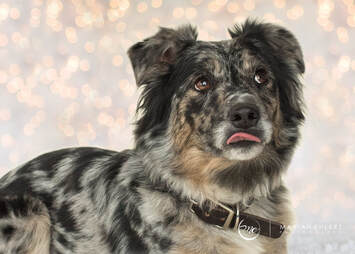 "Finicky eaters are made, not born." - Sue Ailsby And that means there are steps we can take to create a food motivated dog. A food motivated dog will reduce your frustration and the dogs when teaching fitness and rehab exercises. Try following these 3 EASY STEPS for improving your dog's eating habits and their willingness to work for food. 1 Set a time limit for eating. It may be difficult to change at first, but your dog will start to understand they have a meal time and it only lasts so long. Dogs often do not want to eat because they don't need the calories - they're already full. To help increase the value of food, it should not be available all the time. Set a limit - it could be 60 seconds or it could be 10 minutes. Stick to the limit! If you feel like your dog is really going to miss the meal and that they did not know it was going to go away, you can re-present the meal a couple hours later, but DO NOT add anything "better" to get then to eat it. _________________________________________________________ 2 Ditch the bowl! Turn food time into training time. Studies have shown that animals are contra-freeloaders. This means they would rather work for their food than get it for free. Instead of just giving your dog their food in a bowl, try making them do exercises for the food. Ask them to do know behaviors to earn a food reinforcement. You can also use puzzle toys to work for food. _________________________________________________________ 3 Teach your dog to eat. Eating is operant, meaning you can teach them to eat. For this option, it is okay to use a bowl. When your dog takes a lick or a bite of food, reward them with a treat in their bowl. For example, if your dog takes a small bite of kibble, say "Yes" and then put your dog's favorite treat in the bowl. As your dog keeps eating, keep telling them what a good dog they are and placing their favorite treat in the bowl. It's important the treat is placed in the bowl, not coming from your hand. Avoid coaxing your dog to eat. It can often increase anxiety around food, which leads to more reluctance to eat. Your dog can learn that not eating immediately leads to "something yummier" being added to the meal. This is how a picky eater is created. Unsure if this will work for you? Give it a try, then contact The Total Canine if you still need help.  What is a Total Canine Telehealth Consultation? A telehealth consultation is a Zoom meeting (video and audio capabilities) that happens between a clinician and dog (or cat or other animal) owner for the purpose of discussing rehabilitation, sports medicine or fitness practices for their pet. Often, diagnostic or therapeutic education/advice occurs and Dr. Leslie creates a therapeutic plan. Dr. Leslie excels at explaining previous findings in a way the owner can understand and make sense of what needs to happen next. Total Canine Telehealth consultations allow easy and convenient access to veterinary recommendations for out-of-state and international owners unable to travel to The Total Canine for a consultation with Dr. Leslie. Dr. Leslie can provide you the information to better advocate for your dog when having an in-person evaluation, if it is decided that seeing another professional is the best next step for you. Dr. Leslie offers telehealth consultations for canine companions and performance dog owners related to musculoskeletal injuries, lameness, undiagnosed orthopedic conditions, performance-related issues, and crucial early identification and prevention of injuries. Dr. Leslie is happy to offer treatment plans for previously diagnosed issues, fitness and conditioning plans, as well as one to one coaching. She can also provide information on nutraceuticals and supplements, rehabilitation therapy, prevention and conditioning, and diagnostic musculoskeletal ultrasound. Owners will submit a consultation form, patient histories, diagnostics, medical records and videos of the patient prior to the telehealth consultation being scheduled. This will be discussed during the free Discovery Call. The materials will be reviewed in advance and often reviewed with the client during the meeting. The telemedicine coordinator may reach out in advance for additional information, materials and videos if needed. The fees for review of all materials, an 80 minute teleconsultation, and written plan is $265.00. This will be paid in advance via the link provided after scheduling the consultation. The Total Canine team does their best to answer all your questions and get you and your dog back to the best life possible. consultations on nutraceuticals and supplements What people are saying about working with The Total Canine:
"Dr. Eide is a terrific veterinarian - but she has an incredibly rare skillset of being a world-class competitor in canine athletics while also practicing medicine. This combination informs her ability to diagnose and treat injuries as well as offer extensive preventive strategies. There's no substitute for someone who knows both the sports, and the medicine, inside and out. Highly recommend." - Monique Feyrecilde I cannot recommend Dr. Leslie Eide enough! My border collie Hops was showing lameness that our veterinarian was unable to diagnose. Dr. Eide was not only able to diagnose him right away (rip in a shoulder ligament, fall of 2016), but she was with him through his surgery, through his recovery, through his months of rehab, then through his successes as he returned to agility. She took Hops from being a broken border collie in hobbles to a champion. Hops not only returned to agility, he returned just as strong as before! After returning, Hops won his 3rd National Agility Championship (2018), ran on the European Open team (2018), was an alternate for AKC's World Team (2018) then was a full World team member, running at the FCI Agility World Championships in Finland (2019). I know the reason we were able to return so strong was because we followed Leslie's rehab plan to the T! Thank you Leslie! - Sarah Baker Leslie is awesome!! Skeeto Bear, my 7.5yrs old Chesapeake Bay Retriever tore her CCL while competing in dock diving Aug of 2019. She had TPLO surgery Sept 10th 2019. Started working with Leslie at 6 week's PO. She was there from day one helping me, guiding me. She set up a personal page so we could communicate. She would give me different exercises with videos to show you how to do them correctly and have you video your dog so you are doing them correctly. If I had any questions she was there. At 5 months PO TPLO surgery she competed at Dockdogs, jumping 16ft 11in, which is close to her normal distance which is 18 to 20ft. She made it into the finals!! She also took 4th place in Express Speed Retrieve! I couldn't have done it without her kindness and expertise. I would definitely recommend Leslie to help you and your dog!! - Sandy Thiel "There's no right way to do it, but you're doing it wrong." Is there one right way to teach a fitness behavior? No. But more and more I'm hearing certain training techniques are bad or not appropriate for learning or for fitness. And I'll be the first to admit that I use an amalgamation of different techniques to get the final behavior, then turn it into an exercise and finally include it into a workout. I think it's important to understand all the different techniques, know how they work best, and know when to use them individually and in combination. My first consideration when training a new behavior: Setting the environment:
My second consideration when training a new behavior: Will luring help?
My third consideration when training a new behavior: Can I use capturing and luring together to decrease frustration?
Examples of Lured Fitness Behaviors: Down to Stand Circles Figure 8s Side Steps Walk Backwards Hiccup Examples of Captured Fitness Behaviors: Posture Standing Front Paw Target Rear Paw Target Sit Down Examples of Exclusively Free Shaped Behaviors In Fitness ______ Stay tuned for how I teach dogs to lure to decrease frustration and food mania. Working with June Bug to capture 3 new behaviors on a platform.
 Five years ago, myself and Sarah Stremming developed an online class to help agility dogs jump better. The class was created around a program of fitness and jumping exercises for my dog Stig. The combination of fitness, jump grids, and training techniques is like nothing I’ve ever seen anywhere. Now I use this program for all my agility dogs and for all the dogs that come to me for agility fitness training. There are SO MANY different things you can learn in this class. It was a hard task to narrow this down to the top 5 concepts you will learn, but here they are: 1)The 5 Phases of Jumping – Approach, Take-off, Aerial, Landing, and Departure The approach and departure are affected by the set up and handling. The dog depends on the information we give them to know how to approach the jump and where they are going after the jump. The Take-off, Aerial, and Landing phase can all be affected by strength and conditioning. 2)Correct Jumping Form – Not every dog jumps the same and that’s okay! Jump form will change with extension, collection, and different departures. Learn to analyze the dog’s jump arc, and how to manipulate the environment (including what parts of the body to strengthen) to improve it. 3)Use of Grids as Plyometric Exercise – plyometrics are a form of reactive exercise that usually takes the form of jumping. Specifically, the muscles are loaded and then quickly allowed to unload, like loading a spring and then allowing it to explode. Plyometric exercises are not only a great way to strengthen the muscles, but also to quickly build power. 4)Whole Body Conditioning – the whole body needs strength for powerful jumping, not just the core. All the muscles need strength and power and must fire the correct amount and in the correct order to create amazing jumping. 5)The Joy of Jumping – often we take jump training for granted. We expect the dog to figure it out with little help from us. Both you and the dog will learn to love jump training. To learn more about jumping fitness, check out Jumping Gymnastics at Fenzi Dog Sports Academy. Class opens for registration on July 22, 2020 and starts August 1, 2020. The class runs for 6 weeks and has 3 levels of participation. Gold spots (12) have full participation, posting videos for feedback and asking questions for discussion. Silver spots (25) are allowed to ask question and post a very limited amount of video (2 x 1min) for feedback. Bronze spots (unlimited) are allowed access to all material and all student threads. The bonus for bronze students is the opportunity to join a Facebook group to get feedback from other students and our teaching assistant, Jenn Bennet. Every student has access to the material as long as you take one FDSA class or workshop a year. For more information, click on the link: https://www.fenzidogsportsacademy.com/index.php/courses/11652  Have you ever paid attention to how your dog sits? If you’re like me, I used to only focus on the end position. I never really cared how my dog got into the sit, just that the sit ended up symmetrical left to right and looked like a perfect right triangle from the side. While that end sit position works many parts of the body and is extremely important, how the dog gets into the position is just as important. After working with thousands of dogs, I have come across three ways the dog moves into the sit and luckily they have been given names: The Tuck Sit – front legs remain stationary and the rear legs move forward into the sit The Rock Back Sit – rear paws remain stationary as the rear legs flex into position and the front legs step backwards The Combo Sit – a combination of both of the above sits; front legs move backwards and rear legs move forward to get into the sit position Let’s break down each of the movements.
The Tuck Sit is mostly a core exercise, especially as the rear legs move together into the sit position. It also engages the muscles that help attach the shoulder blades to the body. You get some pelvic limb involvement but the load on those muscles is very low. The Rock Back Sit engages the muscles of the rear legs, similar to the muscle activation during the down portion of a squat. The quads are working eccentrically, while the hamstrings and gluteal muscles activate. There is also front leg activation of the supraspinatus, biceps, and triceps muscles. The front limb muscle activation is not more than walking backwards, so it is typically not the focus of this exercise. The Combo Sit – works a combination of the above muscles, but less than the each individually. This is why I typically avoid this type of sit in fitness exercises. Is one type of sit better than the other? NO!!! They both are important because they work different muscles and are progress very differently. The Rock Back Sit becomes a squat. The Tuck Sit becomes a Hop. If your dog does any sport or job that includes jumping, both of these exercises are of utmost importance. Learn more with Leslie! Check out the Weekly Webinar: Battle of the Sits, Friday April 3, 2020 at 4pm Pacific time. |
Location |
|

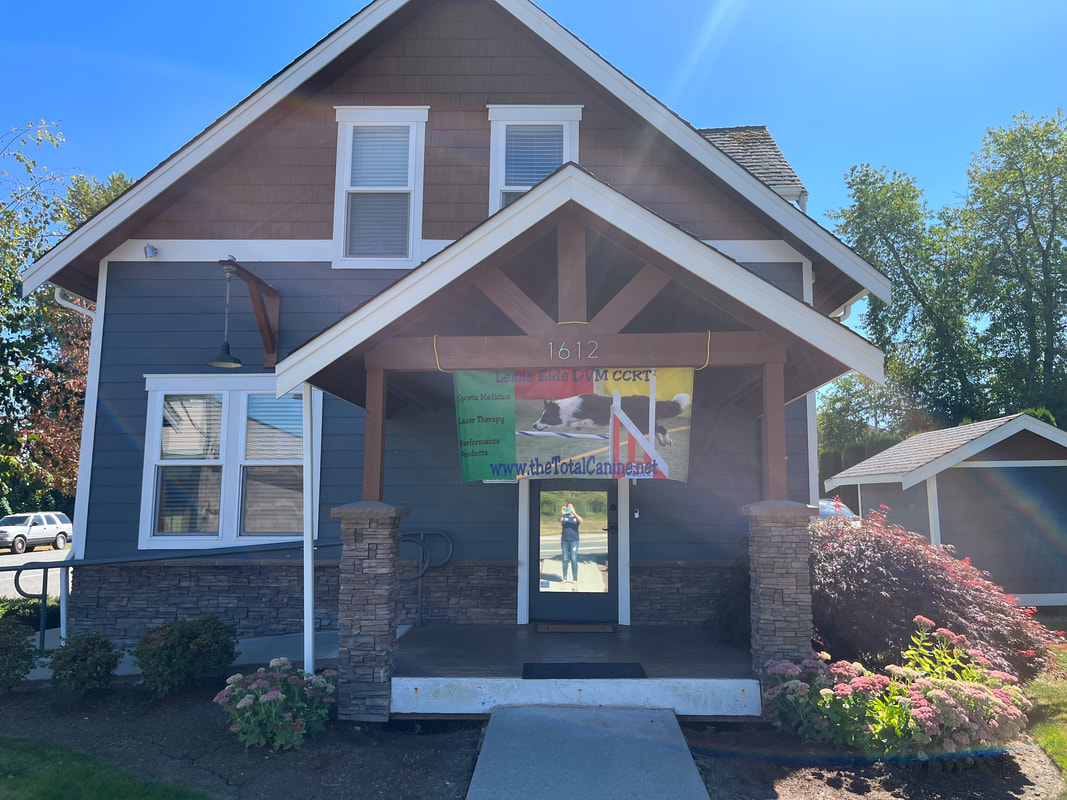


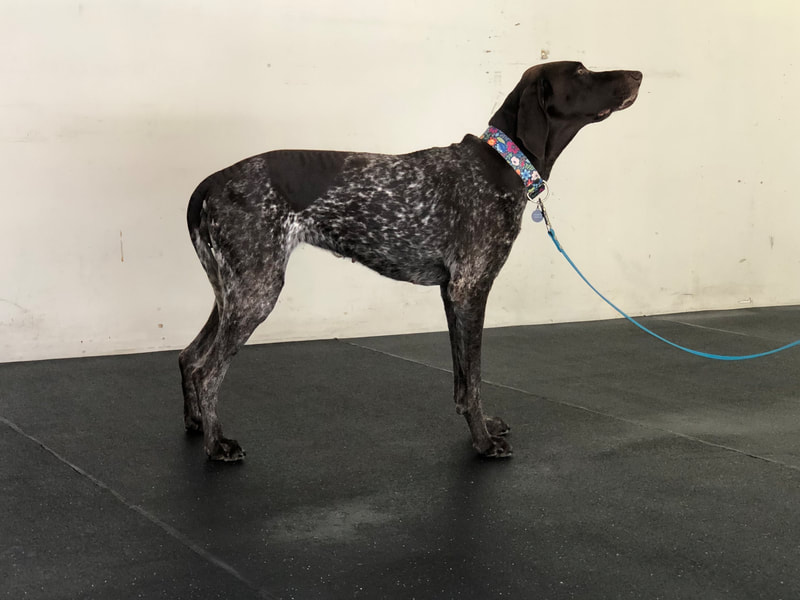

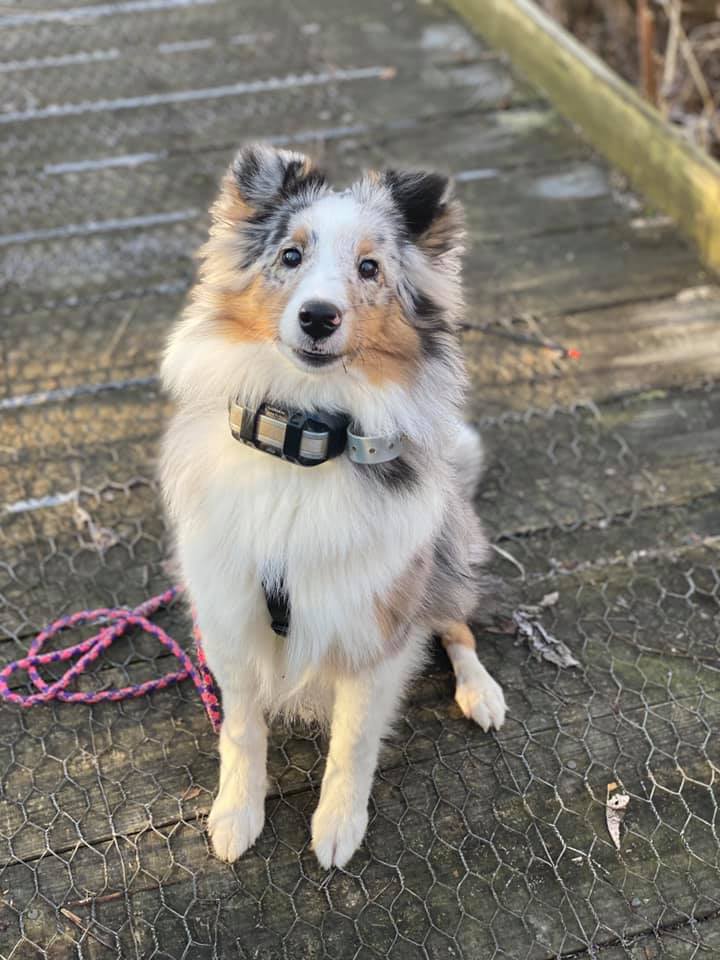


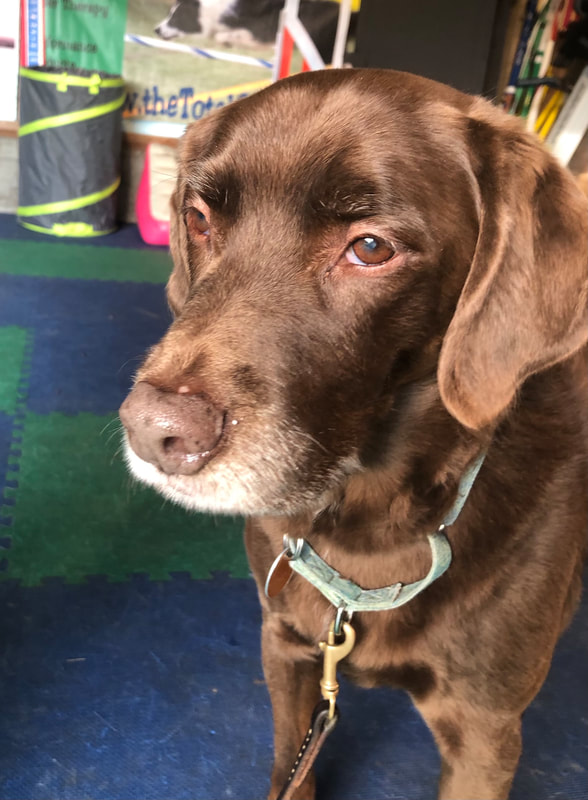
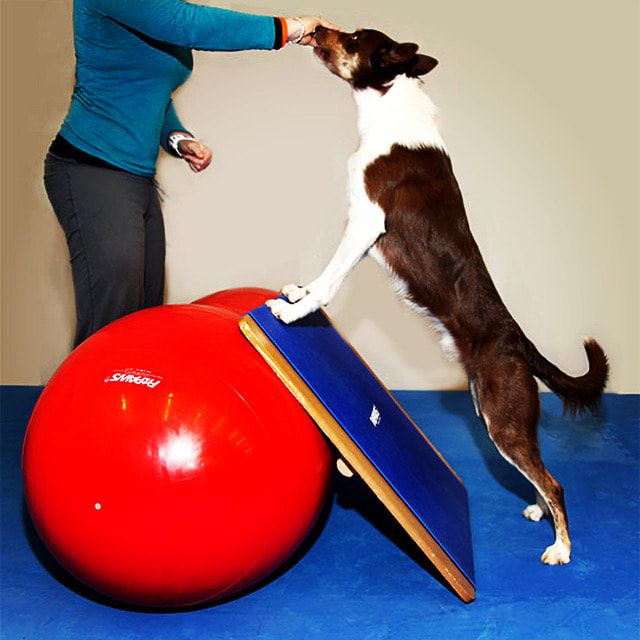
 RSS Feed
RSS Feed